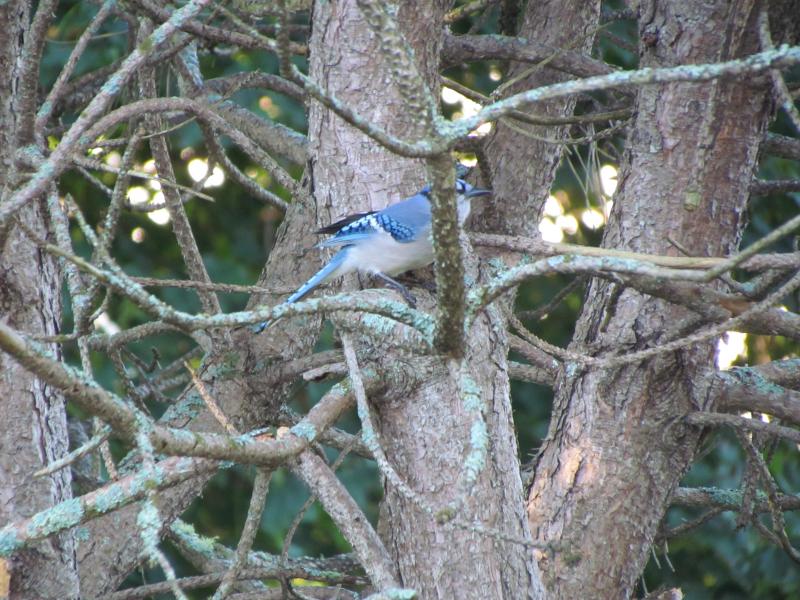We’ve been seeing a lot of blue jays lately. Big deal, right?
Well, many people don’t realize that although blue jays are common here year-round, they’re actually a migratory bird.
Not unlike any other migratory species (orioles, phoebes, warblers and others) blue jays move south for the winter, although the overall effect is not quite the same, especially since in winter, we rarely see those other species. But we are pretty much guaranteed that blue jays will be regular visitors to our yards and other areas throughout the snowy months.
The fact is, a large portion of the blue jay population in the northern part of the range does migrate south. In both fall and spring, it’s quite common to see flocks of blue jays flying purposely along, a few hundred feet up in the sky.
What we’ve noticed lately, though, are lots of blue jays moving around in our neighborhood and work places, presumably birds that have migrated in and are looking around for food before eventually continuing on.
Exactly which birds migrate and why and whether birds that nest in one area tend to winter in the same area are all mysteries that are yet to be discovered about blue jays.
Our frequent sightings lately are good reminders to those of us who have grown up with blue jays as a common part of the natural landscape of how stunningly beautiful blue jays are. People who have never seen one before often are extremely impressed by their dramatic plumage.
Interestingly, the blue colors that we see on a blue jay do not come from pigments, as do colors in most birds. Rather they are the result of an unusual cell structure on the surface of the feathers that reflects the blue colors in visible light.
Blue jays are famously noisy, at least at certain times of year. A characteristic sound of late fall for us is the sound of a loud blue jay. This is quite a contrast during the late spring and early summer, when the birds have nests or young, blue jays can seem to disappear as they stay quiet and sneak around like a secret agent.
One of the things they are sometimes doing when sneaking around at that time of year is looking for food for their young. That can include raiding the nests and taking the young of other birds — a part of their life history that can make them unpopular with some folks.
On the plus side, if you will, blue jays are usually among the first birds to spot and loudly mob predators including cats, hawks, snakes and others, giving warning to other birds in the area to cover or join in the effort to defend against the invader.
They also have the charming habit of very professionally imitating the calls of a variety of hawks. We have often heard them imitating the calls of red-shouldered and broad-winged hawks.
So as you spot a blue jay these days, take a moment to wonder about it.
Ask yourself, is this a bird that raised its family in the Canadian Boreal Forest? Or was it the same one I saw while enjoying my morning coffee on the back deck? The question will remain unanswered, so enjoy the mystery!































.png)
.png)

